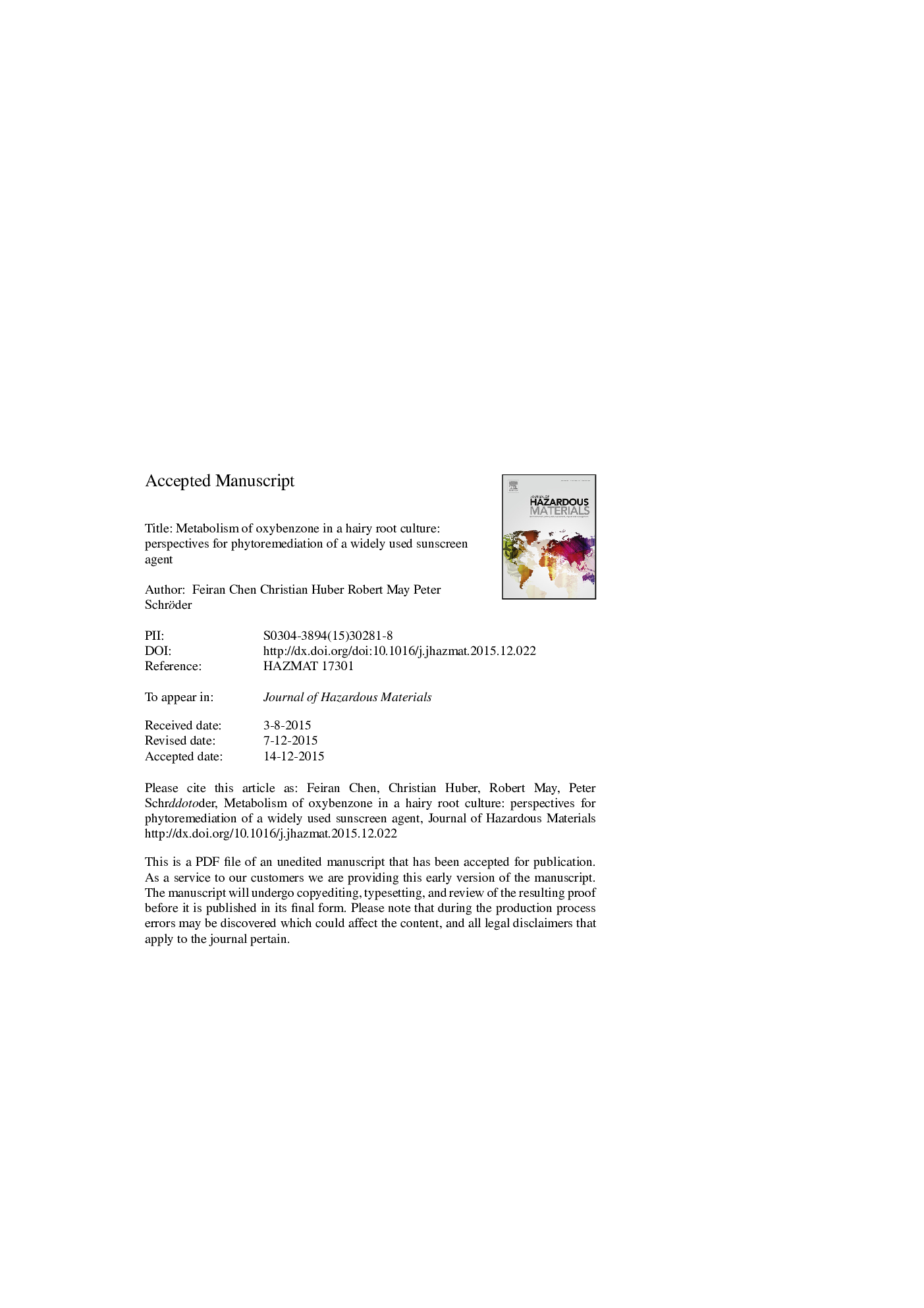| Article ID | Journal | Published Year | Pages | File Type |
|---|---|---|---|---|
| 575567 | Journal of Hazardous Materials | 2016 | 25 Pages |
Abstract
Oxybenzone (OBZ), known as Benzophenone-3, is a commonly used UV filter in sun tans and skin protectants, entering aquatic systems either directly during recreational activities or indirectly through wastewater treatment plants discharge. To study the potential degradation capacity of plants for OBZ in phytotreatment, a well-established hairy root culture (Armoracia rusticana) was treated with OBZ. More than 20% of spiked OBZ (100 μM) was eliminated from the medium by hairy roots after 3 h of exposure. Two metabolites were identified as oxybenzone-glucoside (OBZ-Glu) and oxybenzone-(6-O-malonyl)-glucoside (OBZ-Mal-Glu) by LC-MS/MS and TOF-MS. Formation of these metabolites was confirmed by enzymatic synthesis, as well as enzymatic and alkaline hydrolysis. Incubation with O-glucosyltransferase (O-GT) extracted from roots formed OBZ-Glu; whereas β-d-Glucosidase hydrolyzed OBZ-Glu. However, alkaline hydrolysis led to cleavage of OBZ-Mal-Glu and yielded OBZ-Glu. In the hairy root culture, an excretion of OBZ-Glu into the growth medium was observed while the corresponding OBZ-Mal-Glu remained stored in root cells over the incubation time. We propose that metabolism of oxybenzone in plants involves initial conjugation with glucose to form OBZ-Glu followed by malonylation to yield OBZ-Mal-Glu. To our best knowledge this first finding presenting the potential of plants to degrade benzophenone type UV filters by phytoremediation.
Related Topics
Physical Sciences and Engineering
Chemical Engineering
Chemical Health and Safety
Authors
Feiran Chen, Christian Huber, Robert May, Peter Schröder,
